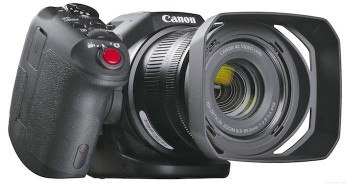
Behold: the Canon XC10. A two-pound, 4K, stills & video camera with a fixed 10x lens and no XLRs. Kinda small. Kinda lumpy. What gives? And lo, it came to pass in those days that the wire services and news…

Behold: the Canon XC10. A two-pound, 4K, stills & video camera with a fixed 10x lens and no XLRs. Kinda small. Kinda lumpy. What gives? And lo, it came to pass in those days that the wire services and news…
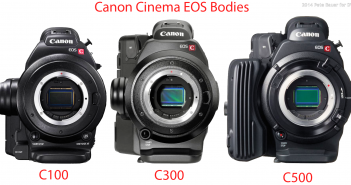
Last autumn and winter I had the opportunity to shoot with both the Canon C100 and 300 cameras. Not surprisingly, I now want to join the ranks of Cinema EOS owners. So which model should I buy? It turned out…
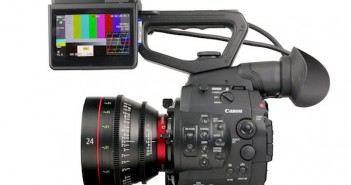
When Canon lent me and Art Adams a 1D C and a C500 for review, they also left us three cine primes and a compact cine zoom, all in EF mount. Here’s a quick look at these lenses.
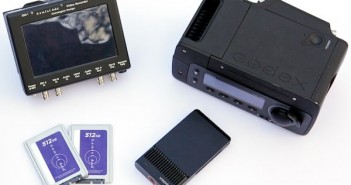
Quick Look: 2K/4K Recorders for the Canon C500 So you’ve gone and booked a gig with the Canon EOS C500, and you wish to partake of the camera’s detail-rich, uncompressed 2K or raw 4K goodness. You’ll need something to record…
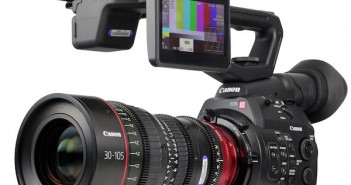
The US$26,000 Canon EOS C500 joins the $16,000 C300 and the $6,500 C100 as the Big Daddy of Canon’s Large Single Sensor cine cameras. All three cameras share the same Super35mm-sized 4096×2160 sensor, the same general body design, and the “Canon look,” but diverge in their recording formats and output capabilities. The original C300 records 8-bit, 4:2:2 1080p using the Canon XF codec, and offers HD outputs on SDI and HDMI. It pioneered the “potato-cam” form factor, with a superb side handgrip and a removable, tilt-and-swivel monitor unit. The C100 is a simplified AVCHD ‘corder with the same great handgrip, an integrated LCD in place of the monitor unit, and HDMI output only (no SDI). Read More…
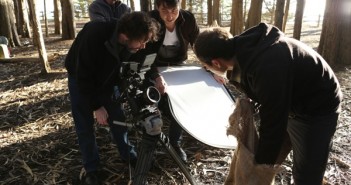
I was initially thrown by the waveform display, which reflects the levels of the underlying log-encoded raw data at all times. Due to the log encoding most of the data was compressed toward the middle of the dynamic range, which is typical for a log curve, but that made it difficult to see what was happening to individual objects, like faces. Over time I learned that all I had to pay attention to was highlight clipping. If I set the exposure by eye based on what I saw in the onboard LCD and then checked that the clipped highlights were the ones I expected to be clipped (there’s always something clipped in a dark forest, usually the sky), I knew I had more than enough to work with in post. And I really liked the quality of the clipped highlights: they were white but not zingy, electronic white, similar to what I see on the Canon 5D Mk. III.
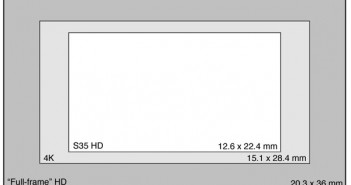
In the beginning… there was the Canon 5D Mk II. It wasn’t the first HD-capable DSLR, but it was the first one good enough for serious work. Once Vincent Laforet’s “Reverie” went viral, there was no putting the large-sensor, low-light, super-shallow-depth-of-field genie back in the bottle—no matter how soft the images, how prevalent the aliasing, and how much bother it was (for the two years prior to firmware version 2.0.3) to deal with 30p images in a 24p world.
Fast-forward five years: Canon’s EOS-1D C, announced at NAB 2012, is now shipping. It’s a full-frame DSLR with an 18 Megapixel sensor, full-frame and crop-mode HD recording, and true 4K at 24fps: 4096×2160 pixels. Yep, 4K in a DSLR package. And it’s only… $12,000.

Last February I shot a short test film with the Canon Cinema EOS C300. Thanks to Canon I got the loan of the camera for a few days and we shot a short narrative film titled THE ONE OFFS. My…
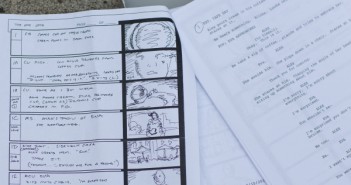
I’ve included all the details I think are essential to not just the camera and it’s function, but the script and process as well, compete with names, dates, work flows and strategies. We’re finishing post production as I write this, and the film looks great. We had a delightful time shooting, thanks to a genuinely bright and funny cast, a small, industrious crew and an amazing new camera, the Canon EOS C300.

Two identical cameras, one with EF mount, one with PL mount; Super-35 4K CMOS sensor,records 1080p30 to Compact Flash cards using existing Canon XF 50Mbps 4:2:2 MPEG2 codec. At Paramount Studios in Hollywood today, Canon USA is announcing two forthcoming…